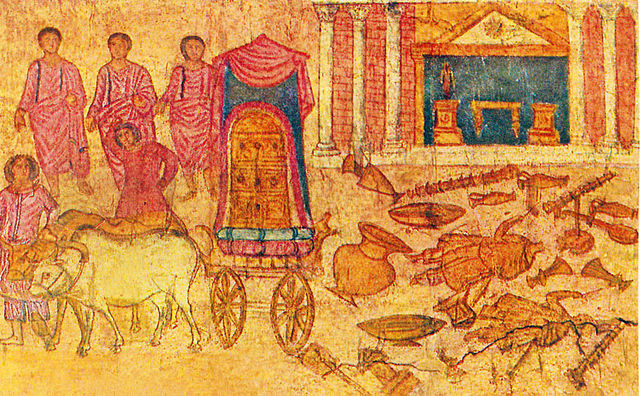The Mount of Olives, an elevated ridge located east of Jerusalem, holds deep religious and historical significance, especially within Judaism and Christianity. Its importance permeates numerous events and prophecies recorded in the Hebrew Bible and New Testament.
Prophetic Significance in the Hebrew Bible
The Mount of Olives plays a significant role in biblical prophecy. One of the most striking comes from the Book of Zechariah (14:4), which states that on the Day of the Lord, God will stand on the mount, causing it to split in two and form a valley. This prophetic event underscores the mount’s divine significance and its role in the eschatological narrative.
The mount also resonates with Davidic and messianic traditions. King David, according to 2 Samuel (15:30), ascended the mount in a state of mourning during his flight from Jerusalem, intertwining the location with Davidic history and foreshadowing the Messiah’s journey.
New Testament Connections and Christ’s Journey
The New Testament further enhances the importance of the Mount of Olives, particularly in the life of Jesus Christ. The Gospel accounts detail Jesus’ triumphal entry into Jerusalem, which began as He descended from the mount (Matthew 21:1-11; Mark 11:1-11; Luke 19:28-44; John 12:12-19). This event is viewed as a fulfillment of Zechariah’s messianic prophecy (Zechariah 9:9), bolstering the mount’s ties to messianic expectations.
Beyond this, the mount served as a backdrop for other significant moments in Jesus’ life. He often taught His disciples here, including delivering the Olivet Discourse, where He discussed the end times and His Second Coming (Matthew 24; Mark 13; Luke 21).
The Garden of Gethsemane, nestled at the foot of the Mount of Olives, is where Jesus prayed and was subsequently arrested before His crucifixion, further deepening the site’s religious importance (Matthew 26:36-56; Mark 14:32-52; Luke 22:39-53; John 18:1-12).
Moreover, the Gospel of Luke (24:50-51) and the Acts of the Apostles (1:9-12) recount Jesus’ ascension into heaven from the Mount of Olives, marking the mount as a pivotal site in the Christian narrative of salvation.
Conclusion
The Mount of Olives’ deep-rooted religious and historical importance underscores its relevance within the context of both Judaism and Christianity. The site’s multifaceted role—from biblical prophecy to pivotal moments in Jesus’ life—offers a rich canvas for exploring and understanding the profound connections between geographical locations and spiritual narratives.
Discussion Questions
- How do the events that occurred on the Mount of Olives illuminate the connection between Old Testament prophecy and New Testament fulfillment?
- In what ways does the geography and history of the Mount of Olives enrich your understanding of significant biblical events?
- Considering the events of the Olivet Discourse and the ascension, how does the Mount of Olives contribute to the Christian understanding of Jesus’ second coming?
Further Reading
- “The Mount of Olives in the Bible and Archaeology,” by Hillel Geva: This article delves into the archaeological findings on the Mount of Olives and how they correspond with biblical accounts.
- “The Eschatological Symbolism of the Mount of Olives,” by Brant Pitre: In this work, Pitre examines the Mount of Olives’ eschatological significance within the broader context of biblical prophecy.
- “Jesus and the Mount of Olives,” by William Lane Craig: A detailed examination of the New Testament accounts of Jesus’ activities on the Mount of Olives, with insights into their theological implications.




